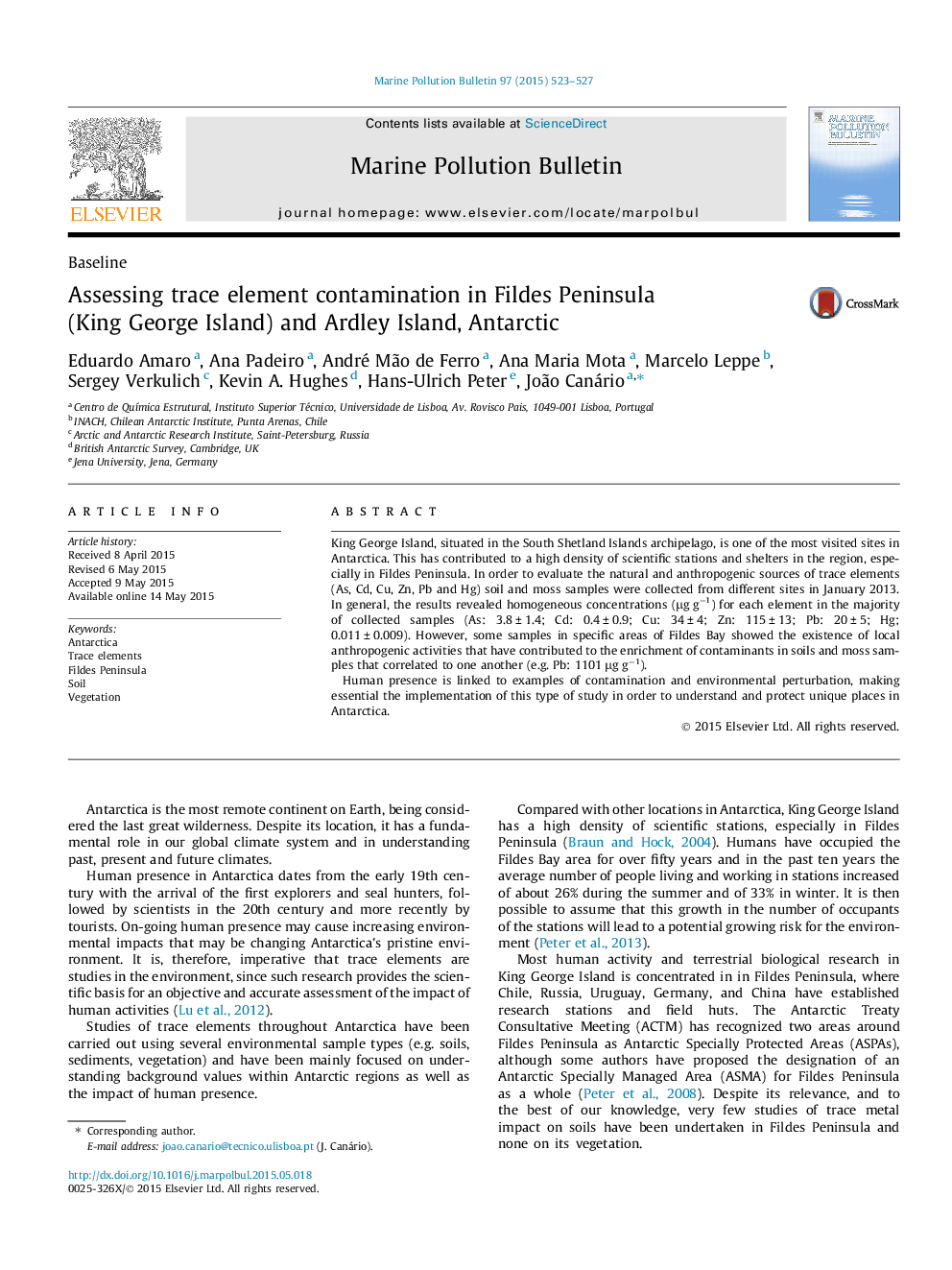| Article ID | Journal | Published Year | Pages | File Type |
|---|---|---|---|---|
| 6357142 | Marine Pollution Bulletin | 2015 | 5 Pages |
â¢Soil analyses from Fildes Bay indicate contamination near scientific stations.â¢The higher concentrations of Pb in soils suggest fuel related activities.â¢The analyzed soils may pose a serious risk to the marine environment.â¢This preliminary study points for the further remediation actions.
King George Island, situated in the South Shetland Islands archipelago, is one of the most visited sites in Antarctica. This has contributed to a high density of scientific stations and shelters in the region, especially in Fildes Peninsula. In order to evaluate the natural and anthropogenic sources of trace elements (As, Cd, Cu, Zn, Pb and Hg) soil and moss samples were collected from different sites in January 2013. In general, the results revealed homogeneous concentrations (μg gâ1) for each element in the majority of collected samples (As: 3.8 ± 1.4; Cd: 0.4 ± 0.9; Cu: 34 ± 4; Zn: 115 ± 13; Pb: 20 ± 5; Hg; 0.011 ± 0.009). However, some samples in specific areas of Fildes Bay showed the existence of local anthropogenic activities that have contributed to the enrichment of contaminants in soils and moss samples that correlated to one another (e.g. Pb: 1101 μg gâ1).Human presence is linked to examples of contamination and environmental perturbation, making essential the implementation of this type of study in order to understand and protect unique places in Antarctica.
